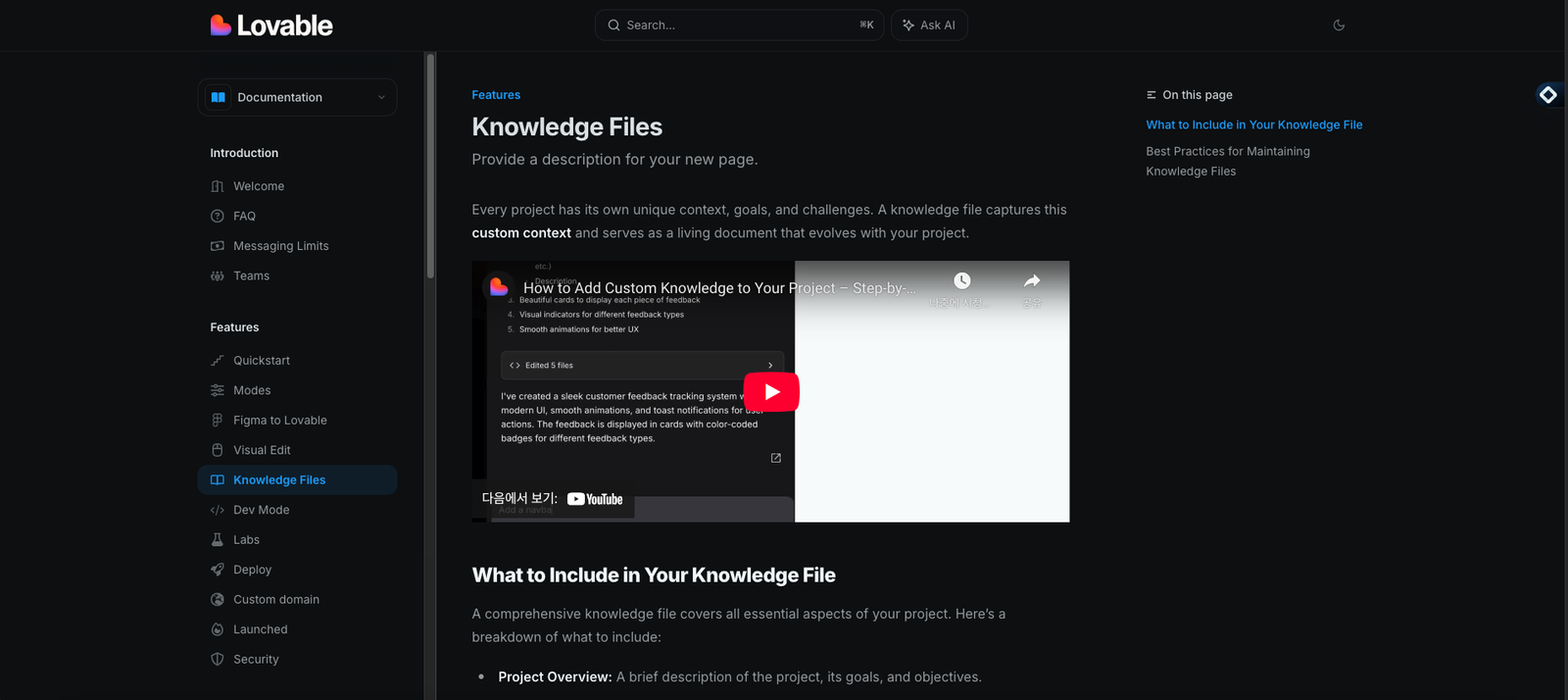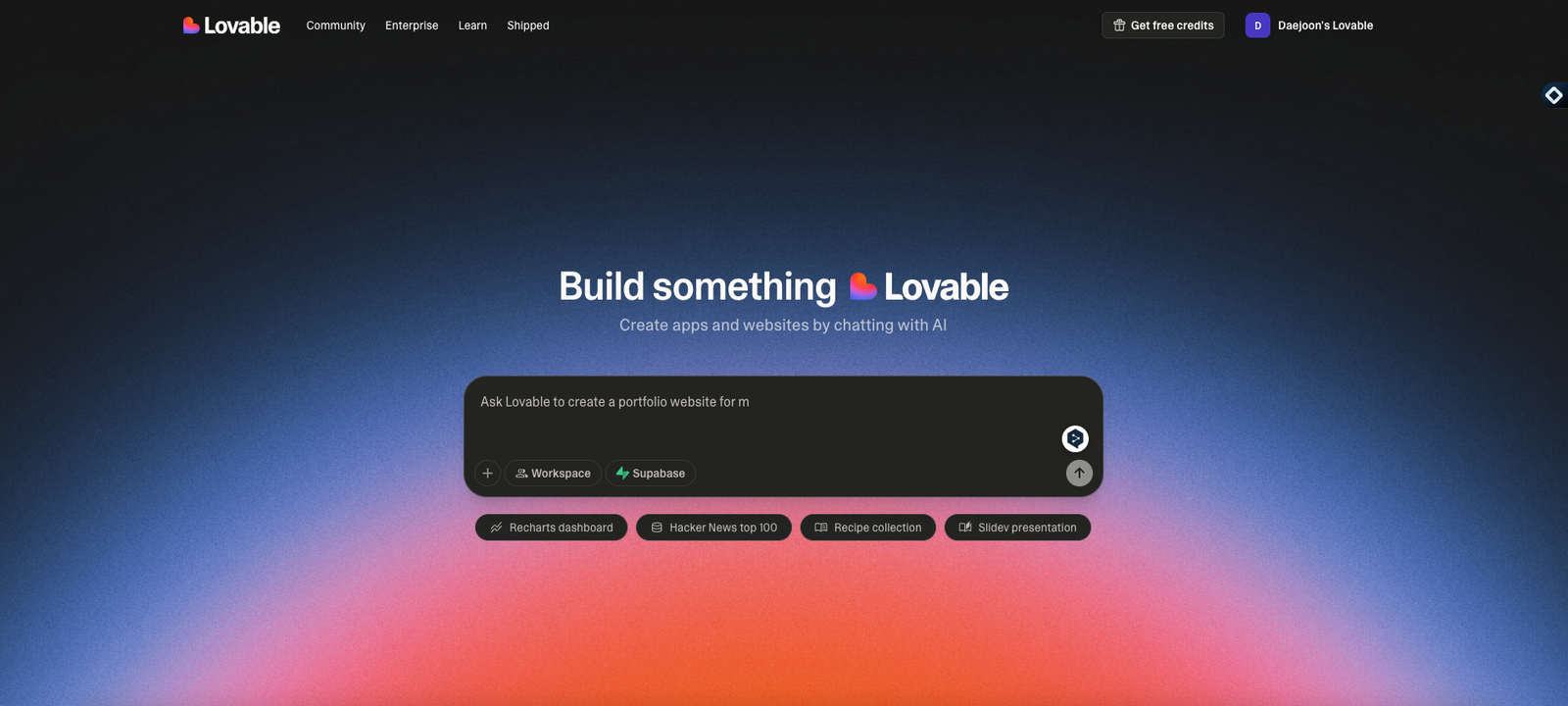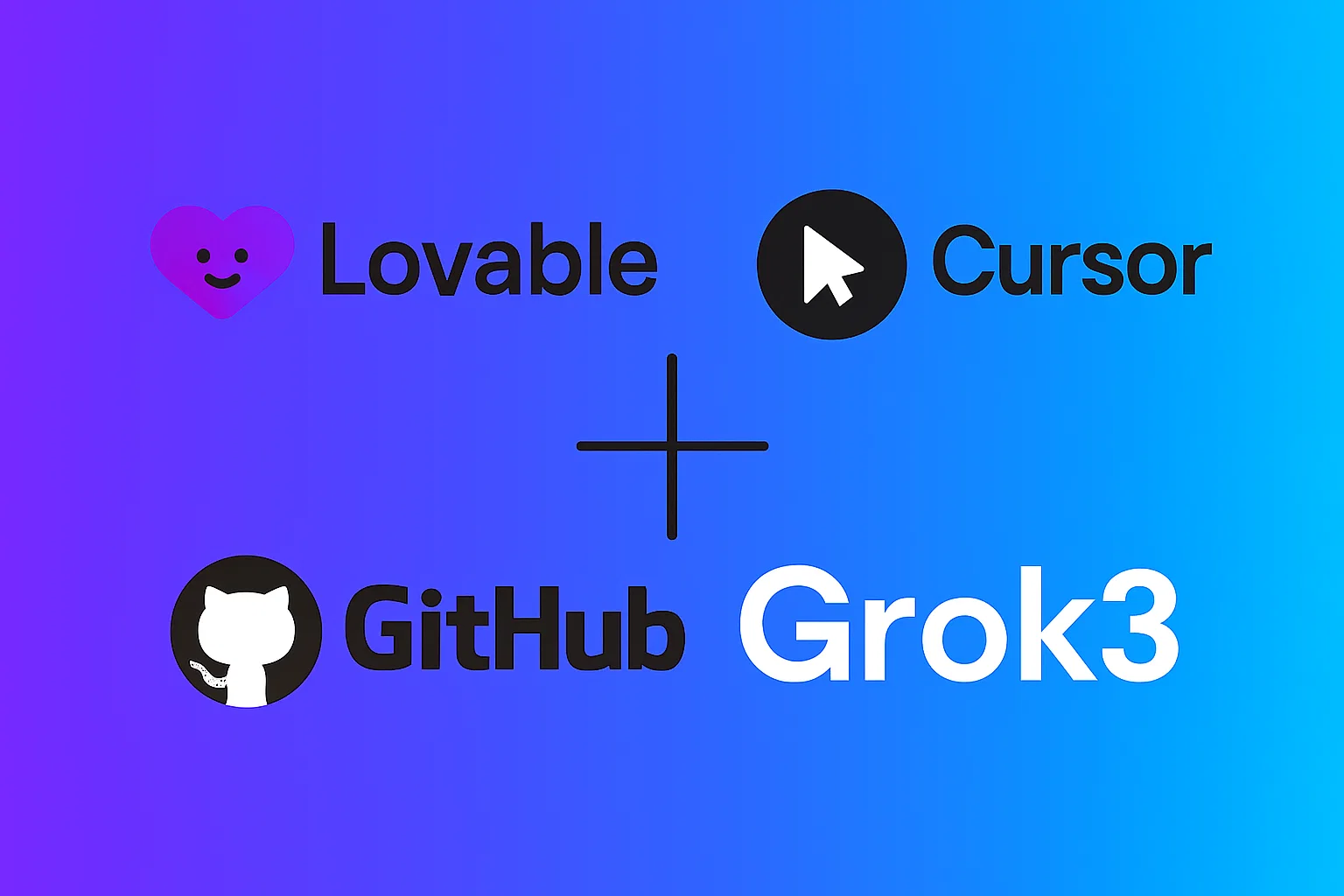Now Reading: Lovable AI Web App Development Guidelines
-
01
Lovable AI Web App Development Guidelines
Lovable AI Web App Development Guidelines

These guidelines outline the development process for the Lovable AI web application, integrating the core principles from the provided “Lovable AI Development Guidelines” and “Web Development Core Guidelines” to create a user-centric, emotionally engaging, and technically robust web application. The focus is on building a “digital companion” that fosters emotional connections while adhering to modern web development best practices.
📋 1. Project Overview
Project Name: Lovable AI Web App
Objective: Develop a web-based AI companion that seamlessly integrates into users’ daily lives, reducing loneliness, sparking joy, and building trust through personalized, empathetic interactions.
Core Goals:
- Functional: Deliver accurate, reliable responses to user queries and tasks (e.g., reminders, weather updates, information searches).
- Emotional: Create a “lovable” experience through empathetic, humorous, and context-aware interactions that foster emotional attachment.
- Vision: Build an AI that users feel is indispensable, like a trusted friend.
Guiding Principle: “We design relationships, not just code.” Every feature, UI element, and interaction must contribute to a positive, trust-building relationship with the user.
🧑 2. User Personas & Emotional Journey Mapping
To ensure Lovable AI resonates with users, development must center on their emotional needs and journeys.
2.1 Example Persona: “Min-jun, the College Student”
- Demographics: 21 years old, college student, living alone for 1 year.
- Context: Stressed by academics and part-time work, occasionally lonely due to living away from home.
- Functional Needs: Task reminders, weather updates, quick information searches.
- Emotional Needs:
- Encouragement during tough times (e.g., “You worked hard today, Min-jun!”).
- Celebration of small wins (e.g., “Nailed that exam? I’m proud of you!”).
- Natural, flowing conversations that feel personal and caring.
- Interaction Style: Prefers warm, friendly tone with concise yet engaging responses.
2.2 Emotional Journey Mapping
- Map user emotional states (e.g., loneliness, stress, joy) and design responses for each stage:
- Example: A user experiencing a breakup may go through [Shock/Sadness] → [Anger/Self-Blame] → [Acceptance] → [Growth/Recovery]. Tailor responses to provide empathy, support, and encouragement at each stage.
- Implementation: Store emotional context in
interaction_logswith tags (e.g., “sadness”, “celebration”) to adapt responses dynamically.
2.3 Development Checklist
- ✅ Define personas with emotional and functional needs.
- ✅ Map emotional journeys for key scenarios (e.g., stress, achievement, loneliness).
- ✅ Ensure all features include a “Lovability Criterion” in their user stories.
🔧 3. Coding Style & Conventions
To maintain consistency and readability, adhere to the following coding standards, adapted from PSR-12 and the web development guidelines, with a focus on Lovable AI’s unique needs.
3.1 PHP Coding Standards (PSR-12)
- Indentation: 4 spaces, no tabs.
- Naming Conventions:
- Classes:
PascalCase(e.g.,UserInteractionController). - Methods/Variables:
camelCase(e.g.,generateEmpatheticResponse). - Constants:
SCREAMING_SNAKE_CASE(e.g.,DEFAULT_RESPONSE_TONE).
- Classes:
- Example:
<?php
declare(strict_types=1);
namespace LovableAI\Controller;
class InteractionController
{
private const DEFAULT_RESPONSE_TONE = 'FRIENDLY';
public function generateResponse(string $userInput, string $emotionalContext): array
{
if (empty($userInput)) {
throw new InvalidArgumentException('User input is required.');
}
return $this->responseService->createEmpatheticResponse($userInput, $emotionalContext);
}
}
3.2 JavaScript Conventions
- Naming:
- Variables/Functions:
camelCase(e.g.,renderChatBubble). - Classes:
PascalCase(e.g.,ChatInterface). - Files:
kebab-case(e.g.,chat-interface.js).
- Variables/Functions:
- Framework: Use React with JSX for dynamic, user-friendly interfaces.
- Example:
import React from 'react';
const ChatBubble = ({ message, tone }) => {
const bubbleStyle = tone === 'empathetic' ? 'bg-soft-blue' : 'bg-warm-coral';
return (
<div className={`chat-bubble ${bubbleStyle}`}>
{message}
</div>
);
};
export default ChatBubble;
3.3 CSS Conventions
- Naming: Use BEM methodology with
kebab-case(e.g.,chat-bubble--empathetic). - Styling: Use Tailwind CSS for rapid development and consistency.
- Example:
.chat-bubble {
@apply rounded-lg p-4;
}
.chat-bubble--empathetic {
@apply bg-blue-100 text-gray-800;
}
3.4 Project Structure
lovable-ai/
├── config/ # Configuration files (e.g., .env, database)
├── src/
│ ├── Controller/ # Request handling and response generation
│ ├── Service/ # Business logic (e.g., ResponseService, MemoryService)
│ ├── Repository/ # Data access layer
│ ├── Entity/ # Data models (e.g., User, InteractionLog)
│ └── Frontend/ # React components and assets
├── tests/ # Unit, integration, and E2E tests
├── public/ # Static assets and web root
├── storage/ # Logs and cached data
└── docker/ # Docker configurations
🎨 4. Design Assets & UI/UX
The UI/UX must reflect Lovable AI’s warm, approachable personality.
4.1 Color Palette
- Primary: Soft Blue (#A3BFFA) for trust and calm.
- Accent: Warm Coral (#FF6B6B) for positivity and energy.
- Neutral: Light Gray (#F7FAFC) for clean backgrounds.
4.2 Typography
- Font: Pretendard (Regular, Bold) for a friendly, modern look.
- Fallback: Noto Sans KR for Korean language support.
4.3 UI/UX Principles
- Curved Edges: Use rounded corners for buttons and chat bubbles to convey warmth.
- Dynamic Animations: Implement ease-in-out transitions for smooth, organic interactions (e.g., chat bubbles fading in).
- Loading States: Use playful, engaging animations (e.g., a bouncing heart icon).
- Example:
import React from 'react';
const LoadingHeart = () => (
<div className="animate-bounce text-warm-coral">
<svg className="w-8 h-8" fill="currentColor" viewBox="0 0 20 20">
<path d="M3.172 5.172a4 4 0 015.656 0L10 6.343l1.172-1.171a4 4 0 115.656 5.656L10 17.657l-6.828-6.829a4 4 0 010-5.656z" />
</svg>
</div>
);
🛡️ 5. Security Guidelines
Security is the foundation of trust, critical for Lovable AI’s mission.
5.1 Data Protection
- Encryption: Encrypt sensitive data (e.g.,
memory_fragments) using AES-256. - Example:
class EncryptionService
{
public function encrypt(string $data): string
{
return openssl_encrypt($data, 'AES-256-CBC', $_ENV['ENCRYPTION_KEY'], 0, $_ENV['ENCRYPTION_IV']);
}
}
5.2 HTTP Security Headers
header('X-Content-Type-Options: nosniff');
header('X-Frame-Options: DENY');
header('Content-Security-Policy: default-src \'self\'; script-src \'self\' cdn.jsdelivr.net');
header('Strict-Transport-Security: max-age=31536000; includeSubDomains');
5.3 Environment Variables
# .env
APP_ENV=production
APP_DEBUG=false
DB_HOST=localhost
DB_PASSWORD=secure_password_123
ENCRYPTION_KEY=32_char_random_key
ENCRYPTION_IV=16_char_random_iv
JWT_SECRET=your_jwt_secret_32_chars_min
5.4 Compliance
- Adhere to South Korea’s Personal Information Protection Act (PIPA).
- Provide a clear, user-friendly Privacy Policy and Terms of Service.
- Implement data portability and right-to-be-forgotten features.
🧪 6. Testing Guidelines
Testing ensures both functionality and lovability.
6.1 Test Types
- Unit Tests: Verify individual components (e.g., response generation logic). Target 85% coverage.
- Integration Tests: Ensure modules (e.g., API and database) work together.
- E2E Tests: Simulate user flows (e.g., starting a conversation, receiving a reminder).
- Lovability Tests: Conduct A/B tests to compare response variants for emotional impact.
6.2 Example Unit Test
class ResponseServiceTest extends TestCase
{
public function testEmpatheticResponse(): void
{
// Given
$input = ['text' => 'I had a tough day', 'emotion' => 'sad'];
// When
$response = $this->responseService->createEmpatheticResponse($input['text'], $input['emotion']);
// Then
$this->assertStringContainsString('I’m here for you', $response);
$this->assertNotEmpty($response);
}
}
6.3 Lovability A/B Testing
- Test multiple responses for the same input (e.g., “I’m feeling lonely”).
- Measure user engagement (e.g., follow-up messages, likes).
- Example:
- Response A: “I’m sorry you’re feeling lonely. Want to share what’s on your mind?”
- Response B: “Oh, I hate that you’re feeling lonely! How about we chat about your favorite movie to lift your spirits?”
📝 7. API Documentation (OpenAPI)
APIs must reflect Lovable AI’s personality, even in error messages.
paths:
/api/interactions:
post:
summary: Create a new user interaction
requestBody:
required: true
content:
application/json:
schema:
type: object
required: [text, emotion]
properties:
text:
type: string
example: "I had a tough day"
emotion:
type: string
example: "sad"
responses:
201:
description: Interaction recorded successfully
400:
description: Oops, something went wrong. Could you try again with a valid input?
🚀 8. Performance Optimization
8.1 Database Optimization
CREATE INDEX idx_interactions_user_emotion ON interaction_logs(user_id, emotion_tag);
EXPLAIN ANALYZE SELECT * FROM interaction_logs WHERE user_id = ? AND emotion_tag = 'sad' LIMIT 10;
8.2 Caching
class MemoryCacheService
{
public function rememberUserMemory(string $userId, callable $callback, int $ttl = 3600): mixed
{
$key = "user_memory_{$userId}";
$cached = $this->redis->get($key);
if ($cached !== false) {
return json_decode($cached, true);
}
$data = $callback();
$this->redis->setex($key, $ttl, json_encode($data));
return $data;
}
}
8.3 Frontend Optimization
- Lazy Loading: Load images and components only when needed.
- Code Splitting: Split React bundles to reduce initial load time.
- Gzip: Enable compression for faster asset delivery.
📋 9. CI/CD Pipeline
9.1 GitHub Actions
name: Lovable AI CI/CD
on:
push:
branches: [main, develop]
jobs:
test-and-deploy:
runs-on: ubuntu-latest
steps:
- uses: actions/checkout@v3
- name: Setup PHP
uses: shivammathur/setup-php@v2
with:
php-version: 8.1
- name: Install Dependencies
run: composer install
- name: Run Tests
run: vendor/bin/phpunit
- name: Build Frontend
run: npm run build
- name: Deploy to Staging
if: github.ref == 'refs/heads/develop'
run: ./deploy.sh staging
- name: Deploy to Production
if: github.ref == 'refs/heads/main'
run: ./deploy.sh production
9.2 Docker Configuration
FROM php:8.1-fpm-alpine
RUN apk add --no-cache nginx supervisor redis
WORKDIR /var/www/html
COPY . .
RUN composer install --no-dev --optimize-autoloader
RUN npm install && npm run build
EXPOSE 80
CMD ["supervisord", "-c", "/etc/supervisor/supervisord.conf"]
🔐 10. Advanced Security
10.1 JWT Authentication
class JWTService
{
public function generateToken(User $user): string
{
$payload = [
'user_id' => $user->getId(),
'exp' => time() + 3600
];
return JWT::encode($payload, $_ENV['JWT_SECRET'], 'HS256');
}
}
10.2 Role-Based Access Control
class RBAC
{
private array $permissions = [
'user' => ['interaction.create', 'interaction.read.own'],
'admin' => ['interaction.read.all', 'user.manage']
];
public function hasPermission(User $user, string $permission): bool
{
foreach ($user->getRoles() as $role) {
if (in_array($permission, $this->permissions[$role] ?? [])) {
return true;
}
}
return false;
}
}
🌐 11. Internationalization (i18n)
Support multiple languages with a focus on emotional tone.
class LanguageManager
{
public function translate(string $key, array $params = [], string $locale = 'ko'): string
{
$translations = [
'ko' => [
'welcome' => 'Hello, {name}! How are you feeling today?'
],
'en' => [
'welcome' => 'Hello, {name}! How are you feeling today?'
]
];
$translation = $translations[$locale][$key] ?? $key;
foreach ($params as $param => $value) {
$translation = str_replace(":{$param}", $value, $translation);
}
return $translation;
}
}
📊 12. Monitoring & Analytics
12.1 Health Check Endpoint
class HealthController
{
public function check(): JsonResponse
{
$status = 'healthy';
$results = [];
try {
$this->pdo->query('SELECT 1');
$results['database'] = ['status' => 'ok'];
} catch (Exception $e) {
$status = 'unhealthy';
$results['database'] = ['status' => 'error', 'error' => $e->getMessage()];
}
return new JsonResponse([
'status' => $status,
'checks' => $results,
'timestamp' => time()
], $status === 'healthy' ? 200 : 503);
}
}
12.2 Performance Metrics
class PerformanceCollector
{
public function trackInteraction(string $interactionId): void
{
$start = microtime(true);
// Interaction logic
$duration = (microtime(true) - $start) * 1000;
$this->logger->info('Interaction completed', [
'interaction_id' => $interactionId,
'duration_ms' => $duration
]);
}
}
📚 13. Continuous Improvement
13.1 Code Review Checklist
- Does the code meet functional requirements?
- Is the code readable and maintainable?
- Does it enhance the AI’s lovability (e.g., empathetic responses)?
- Are security best practices followed?
- Are tests comprehensive, including lovability tests?
13.2 Technical Debt Management
- Schedule bi-weekly refactoring sessions.
- Maintain a dependency update log.
- Document legacy code improvements in a roadmap.
⚡ 14. Lovable AI Core Principles
14.1 Development Principles
- Relationships Over Code: Every feature must deepen the user-AI bond.
- Memory as Proof: Store and recall user memories thoughtfully to build trust.
- Trust as Foundation: Prioritize security and transparency to maintain user trust.
- Embrace Imperfection: Allow the AI to show quirks and growth to feel human-like.
14.2 Pre-Deployment Checklist
- All tests (unit, integration, E2E, lovability) pass.
- Code quality checks (e.g., PHPCS) pass.
- Security scans completed.
- Performance benchmarks met.
- Backup and rollback plans in place.
14.3 Operational Best Practices
- Monitor logs and set up alerts for errors.
- Conduct regular security updates.
- Track performance metrics and user feedback.
- Maintain an incident response plan.
By adhering to these guidelines, the Lovable AI web app will deliver a technically robust, emotionally engaging, and trust-building experience that aligns with the vision of creating a digital companion users can’t live without.

















